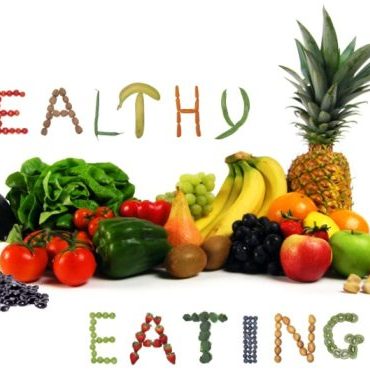 Eat well and exercise – get your 10,000 steps a day and you’ll be on the road to a healthier you…
Eat well and exercise – get your 10,000 steps a day and you’ll be on the road to a healthier you…
What is the best way to diet without sacrificing nutritional needs?
Stop dieting! Eating a balanced diet is the most important concept you have to accept in order for you to make your eating habits a lifestyle. You can lose weight by watching your portion sizes, making good choices of food, and regular exercise. You can eat everything if the quantities are controlled. If you are not comfortable with the amounts you should be eating then you should consult an accredited practising dietitian. I have sample menus on my website www.arlenesway.com.au. Eating well together with a regular exercise regime will result in you losing those extra kilos without being nutritionally depleted. All food groups should be included. Forget fad diets – they may offer quick results but they are not lasting outcomes that you can sustain. You have to be organised with purchasing your food and cooking regularly. You will certainly be eating less than you are eating now, but you should not feel deprived because you can have six small meals a day so you never feel starving as well as regular ‘treats’. Nothing is off limits as long as you plan for it. You can eat anywhere, whether you are eating at home, out in a restaurant, or at a friend’s house – you only have to watch your portions and make sure you are sitting down, eat slowly and enjoy your food – eat mindfully. If you read my book ‘The 10 Commandments for Losing Weight’ it allows you to enjoy your food as part of a balanced lifestyle, which includes healthy amounts of food, exercise, sleep, work and recreation. One important message is to restore balance to your life and you will feel happier and healthier, and you will be able to get your eating under control.
Will I have limitations on my diet after gastric bypass surgery?
Yes you will have to be cautious in your eating habits after gastric bypass surgery. Initially after the surgery and then you will have to maintain better eating habits as a lifestyle. Eating the right foods in the right amounts will ensure your success in losing weight and keeping it off following surgery. Staying physically active will also help you maintain your weight loss. These recommendations provide you with important information to guide your food and activity choices after surgery. Your surgeon, nurse or dietitian should give you specific guidelines regarding what and when to eat and how to stay physically active.
Following surgery, you typically progress through different phases. Every individual progresses at a different pace and some individuals may need to stay in one phase longer than others. The table below briefly explains the phases and their timeframe. However, your surgeon may advance you at a different pace or have you skip certain phases.
Phase Diet Duration
1 Clear liquid 2 to 4 days
2 Full liquid 4 days to 3 weeks
3 Pureed 2 weeks to 1 month
4 Soft 1 month to 6 to 8 weeks
5 Normal Begin at week 8. This will be your lifelong way of eating.
Plan ahead for the types and amounts of food you will eat after your surgery. You will only be able to eat very small amounts initially (1 to 2 tablespoons), so it’s important to choose your foods wisely. The following tips will help you get enough nutrition from a limited amount of food. Eventually your stomach will be able to hold ½ to ¾ cup of food; however, the same guidelines apply. Drink liquids 30 minutes before meals or 30 minutes after meals, not during meals. Eat protein first. It is essential that you get enough protein for healing, nutrition and to prevent loss of lean muscle mass. You will need a minimum of 50 grams of protein every day. Protein is found in many foods. Eat balanced meals. A balanced meal includes vegetables, fruits and whole grains. These foods are higher in fibre, which will help keep you feeling satisfied. Eating foods in this category can also reduce constipation. Eat three meals each day. Avoid foods that are high in sugar or fat. Eat foods with less than 10 grams of sugar per serving. Choose low-fat foods with 3 grams of fat or less per serving. Take small bites and chew food well. The outlet from your new stomach pouch is very small. Foods that are not chewed well may block this area, which causes nausea and/or vomiting. Eat slowly. Eating quickly doesn’t allow time for your brain to signal you are satisfied, so you are likely to eat more than you need. You should spend at least 20 minutes eating at each meal. Avoid eating at the computer or in front of the TV. Sit at the table so you can pay attention to your body’s hunger cues. Stop eating when you feel satisfied. If you continue to eat after you feel
satisfied, you may experience nausea, vomiting and/or pain, in addition to stretching your stomach pouch. Drink at least 6 to 8 cups of non-calorie liquids between meals.
Foods that may be difficult to tolerate
Tough meats, beef
Fruits or vegetables with peels/skins (e.g., apples, grapes, potatoes, corn)
Gaseous vegetables (e.g., broccoli, cauliflower, cabbage, Brussels sprouts)
Soft-textured breads (toasting bread increases tolerance)
Rice and pasta
Milk and dairy products
Fried foods
Dried fruits, nuts, seeds, popcorn
Raw vegetables
Stringy foods, such as celery or asparagus
Carbonated beverages

